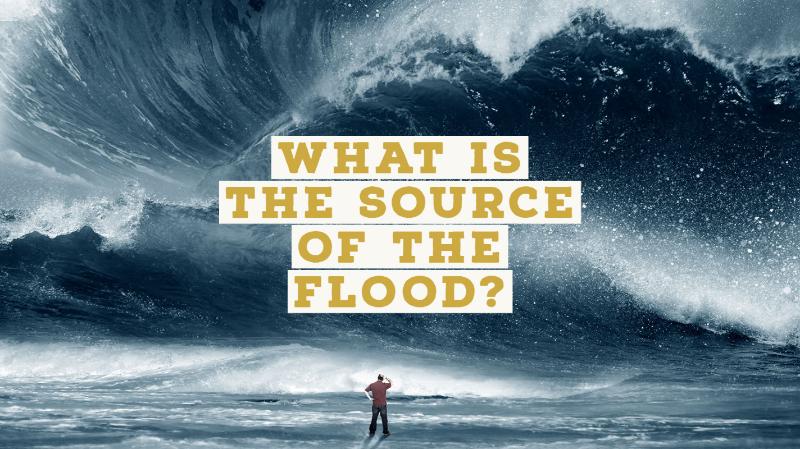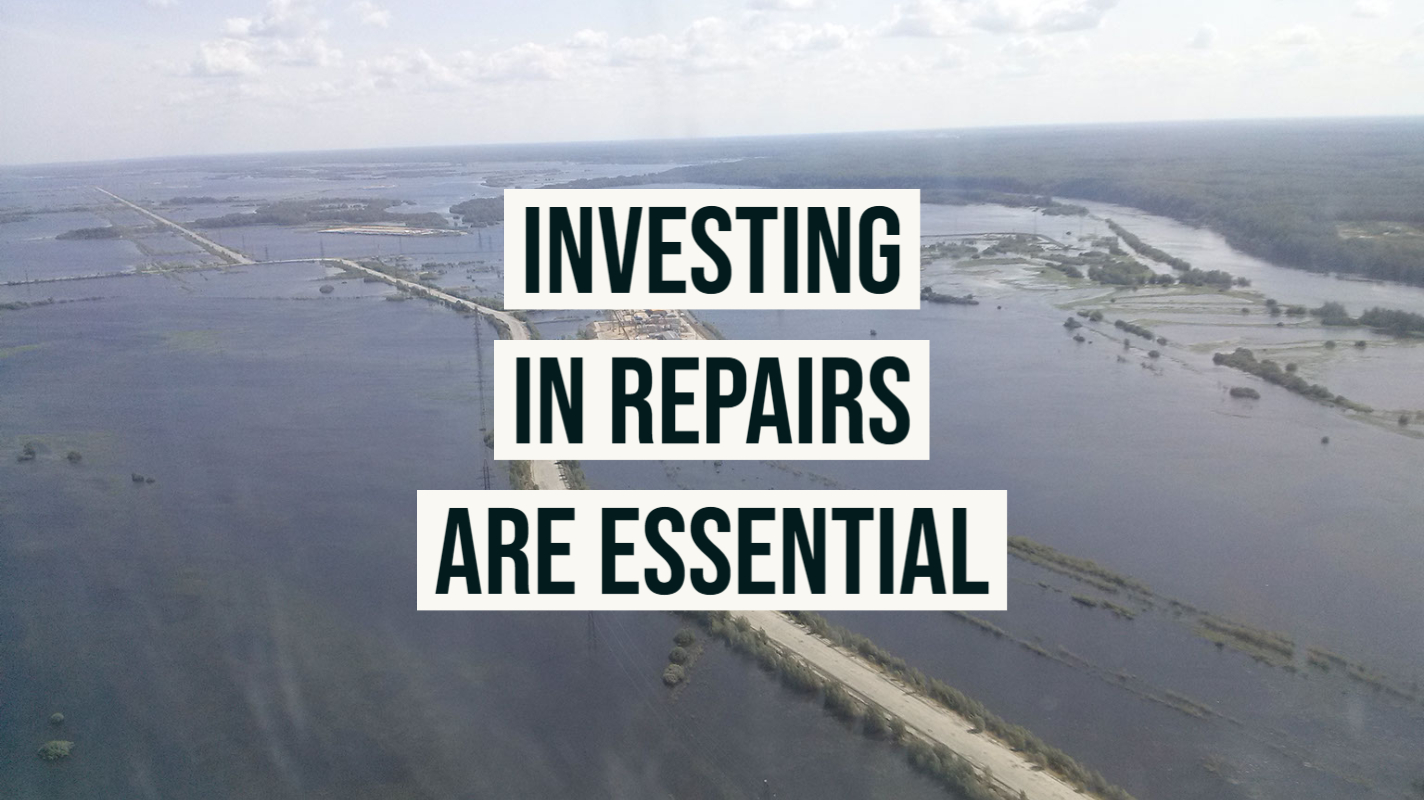Floods happen. It might be a burst pipe or bad weather or a leaky roof, but whatever the cause, it can be a major hassle for homeowners. Home floods are not isolated issues, unfortunately, but, rather, issues that can impact many aspects of the home and the homeowners’ lives.
There are some things homeowners can do to prevent home floods and recover after they occur. All of these depend on your specific type of home, however, as well as where you live and what factors that may imply.
One thing that is true for most of us (85%) is that our homes were built before 1980. That means they are old enough to be in constant need of maintenance and repair. That can compound the issues that arrive from water damage and flooding.
Of course, staying on top of maintenance now can mean fewer headaches in the event of an emergency or unforeseen event like home flooding. However, even with all the right preparation, sometimes the odds are simply against us and bad things happen.
If you experience flooding, don’t panic. Take a deep breath and try out these 6 tips for dealing with home floods.
1. Identify the Source
The first and most urgent task is to figure out what the source of the flooding is. There are many possibilities here so don’t just stop once you hit the first one. You should try to take into account all the possible factors.
One of the most common causes of home floods is bad plumbing of some sort. This commonly means a broken or burst pipe.
Broken pipes can be a major hassle. Leaky and burst pipes can fill your home with water in just minutes, destroying carpets, belongings, and flooring in the process. It is something you want to avoid if at all possible. A plumbing service may be able to help you if you suspect you have some faulty pipes that could burst in the future.
However, if a pipe has already burst, you should shut off your water. Learning how to do this before an emergency occurs is best, but if that time has already passed it’s still important to get the water turned off to prevent further flooding.

Another potential cause is poor drainage. The sneaky thing about this is that it could be inside or outside of your home. Inside, we know that pipes can get blocked and make drainage difficult. This can eventually back up so badly that we experience flooding inside the home.
However, this problem can also originate outdoors. If you have very clogged gutters, for example, water could be backing up and leaking in through your roof. This is a good example of a home flooding problem with more than one root cause. The gutters backing up are one problem, but the roof leaking is another one. Each problem only servers to exacerbate the other, so get emergency roof repair or gutter cleaning as quickly as you can if you suspect this is the case for you.
Not all problems related to flooding are man-made, however. Another common cause of home floods is good old Mother Nature. There isn’t too much we can do when the weather is so severe that it causes flooding. We can’t turn off a hurricane or stop a storm from blowing through.
Sometimes, the best, and only, course of action is to keep you and your family safe and deal with the damage later. Don’t stay in the path of a dangerous storm in order to protect your home. There is likely little you can do anyway outside of preparing. Instead, make sure you are safe and come back later to address the damage.
2. Figure Out What the Damage Is
Speaking of assessing the damage, it is important once you have the immediate crisis under control to find what is damaged. It is not as simple as having a leaky roof and finding a cracked roof shingle. Water is sneaky. It can have a cascading effect when it comes to damage.
For example, you might think you identified a burst pipe as the cause and therefore fixed the cause, but that could leave you overlooking something like the roof or perhaps even the furnace. Even with a burst pipe causing some of the damage, you may find you still need roof or furnace repair in order to truly fix the source of the leak.
You also need to think about more than just the source. It is not just the source of leaks that receive the damage from home floods. There could be many other ares of your home that experience damage due to water.
If you want to be especially thorough after a home flooding incident, hire flood damage restoration services. They will know what to look for that you might accidentally overlook. This is the surest way to know you’ve dealt with all the damage from a home flood.
3. Watch Out for Long-term Consequences
Damage from flooding can haunt your home and family for a long time to come. Even if you identified the source and got all the damage fixed up, there are hidden consequences that you might not feel right away. However, these additional consequences can have some real impacts on your and your family.
For example, home floods can actually result in people getting sick. This depends a lot on the source of the flood and the type of damage, but you should be careful about it. You may want to run air purifiers immediately following a home flood. This is because of what the water can wash into your home or kick up. You may not even be able to see, smell or taste the irritants, but you could feel the effects later on.
This is an especially worrying consequence of home floods. No one wants to see their family get sick because of something like this but it, unfortunately, can happen. Everything might look and feel fine, but if there is hidden damage it could cause sneaky issues, especially if members of your family have underlying health issues.
In the aftermath of home floods, you should be on the lookout for symptoms such as sore irritated throat, coughing, and difficulty breathing. These can be alarming indications that something is still not right.
It may not even happen right away. You should keep these consequences in mind even long after the damage is cleaned up and everything seems like it’s gone back to normal. Stay vigilant in order to keep your family safe.
4. Look Out for Mold
And just what causes those sorts of problems? One of the biggest culprits after water damage is mold.
Mold is no laughing matter. It can seriously make people sick, especially if they have respiratory issues already. Some of the symptoms to watch out for include sneezing, runny nose, coughing, itchy eyes, and dry skin. All of these could indicate that mold is the irritant at work here.
Mold is tough because it can lurk and hide. It likes wet, dark places, so the aftermath of home floods can often provide it with an ideal growing environment right there in your home. Mold can live in the walls, in the roof, in the basement – just about anywhere in your home that is a little overlooked. The spores can travel throughout the whole house, however, and they are often what makes people ill.
After cleaning up the damage from a home flood, you should also consider mold removal down the line. This can ensure that if mold has taken hold due to water damage, you are swiftly removing it again. Professionals can get into the places that we may not be able to access as easily. They will also know to go clear out places we wouldn’t think of. That’s why they’re the experts.
All of this is especially important if you or someone else in the building has a condition such as asthma. Mold spores can agitate these kinds of respiratory conditions, potentially kickstarting a dangerous situation.
5. Get the Necessary Repairs Scheduled as Quickly as You Can
While mold repair can wait, and perhaps should wait, there are other repairs you’ll want to jump on top of as quickly as you possibly can. This goes along with our other tips about swiftly identifying the source of the damage and seeing what might be damaged or broken in your home.
As noted above, the plumbing is one of the biggest culprits when it comes to home floods. Plumbing is also one of the issues that needs to get repaired as quickly as possible. Leaky or burst pipes will just keep on flooding and causing water damage. You really can’t get by with that kind of damage in your home.
If you want to be extra thorough, you could hire local plumbing contractors to both fix the damage that caused the incident and search for any other damage that might be lurking. This can help stop some future incident before it has a chance to start. Making this investment now can mean you avoid a lot of pain in the future, so it is certainly worth your time and energy.

Another common location for problems is the roof. Every homeowner knows they will eventually have to replace their roof and perhaps that time has come. It is unfortunate for home flooding or water damage to be the impetus that results in this kind of repair, but it is necessary either way, so you can simply look at it as a required expense if you own a home.
If your roof is mostly intact, you may get away with simply repairing the damage that is there. Perhaps it truly is just a few crackled shingles or an unfortunate bit of damage from a storm or tree.
It is hard to know for certain without the help of experts. The average homeowner is not simultaneously a roofer, but local roofing contractors can help us figure what the best course of action is when it comes to fixing a roof that has allowed in water damage. Talk with them to find out what your options are and what they recommend for your situation.
6. Start Working with Your Insurance Company
Finally, you will need to talk to your insurance company. We know. Not a super glamorous task, but it is necessary when damage such as home floods occurs.
Not all homeowners insurance covers flooding. Ideally, you would know before any flooding whether or not you are covered, but it is understandable that many of us have to look it up afterward. People don’t typically make a habit of knowing the full ins and outs of their home insurance. It is something we’re required to have, but then many of us forget about it and place it on the back burner.
Now is the time when you will need that insurance to protect you. It can help you pay for repairs and cover the replacement costs of things that may have been damaged. If electronics or furniture or flooring was damaged due to home floods, you might be able to get assistance with that, depending on your insurance.
Often, however, this is a laborious process. Many people turn to an insurance claim attorney for help with this. Even if you feel you know your insurance inside and out, an attorney can help you with the finer details. You may end up with more assistance than you anticipated thanks to going through an attorney. They can deal with the insurance company in a way most homeowners cannot, which makes them well worth the investment.
7. Don’t Panic
Most of all: Don’t panic. It can be very easy to panic when someone experiences home floods. It’s a natural reaction to a burst pipe, major weather event or another disaster.

However, panic will not help you through the situation. Survey the damage, make sure everyone is safe, get the necessary repairs, and work with your insurance company. Take things a step at a time and you and your family can get through this. Experts are available for every step of this if you feel unsure or just want to make sure you’re doing the right things.
